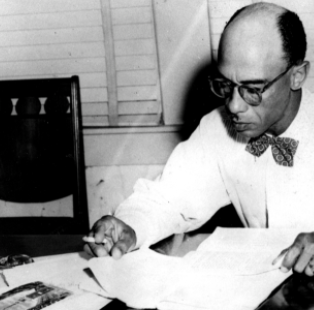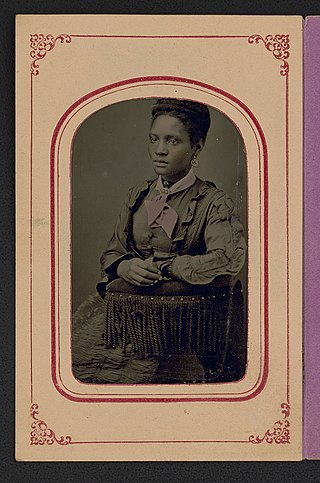
Jack Yates Senior High School is a public high school located at 3650 Alabama Street, very near Texas Southern University, in the historic Third Ward in Houston, Texas. Yates High School handles grades nine through twelve and is part of the Houston Independent School District (HISD).

Huston–Tillotson University (HT) is a private historically black university in Austin, Texas. Established in 1875, Huston–Tillotson University was the first institution of higher learning in Austin. The university is affiliated with the United Methodist Church, the United Church of Christ, and the United Negro College Fund. Huston–Tillotson University awards bachelor's degrees in business, education, the humanities, natural sciences, social sciences, science, and technology and a master's degree in educational leadership. The university also offers alternative teacher certification and academic programs for undergraduates interested in pursuing post-graduate degrees in law and medicine.

Prairie View A&M University is a public historically black land-grant university in Prairie View, Texas. Founded in 1876, it is one of Texas's two land-grant universities and the second oldest public institution of higher learning in the state. It offers baccalaureate degrees in 50 academic majors, 37 master's degrees and four doctoral degree programs through eight colleges and the School of Architecture. PVAMU is the largest HBCU in the state of Texas and the third largest HBCU in the United States. PVAMU is a member of the Texas A&M University System and Thurgood Marshall College Fund.

Texas College is a private, historically black Christian Methodist Episcopal college in Tyler, Texas. It is affiliated with the United Negro College Fund. It was founded in 1894 by a group of ministers affiliated with the Christian Methodist Episcopal (CME) Church, a predominantly black denomination which was at the time known as the Colored Methodist Episcopal Church in America. They planned to provide for education of African-American students, who were excluded from the segregated university system of Texas. They planned a full literary, scientific and classical education for theology, normal training of lower school teachers, music, commercial and industrial training, and agricultural and mechanical sciences.

L.C. Anderson High School is a public high school located in the city of Austin, Texas, United States. It is a part of the Austin Independent School District. The school is named for Laurine Cecil (L.C.) Anderson who served as principal of Prairie View Normal Institute, founded the Colored Teachers State Association of Texas (CTSAT) and served as principal of the original Anderson from 1896 to 1929. L.C. Anderson opened at its current location on Mesa Dr. in 1973.

Heman Marion Sweatt was an African-American civil rights activist who confronted Jim Crow laws. He is best known for the Sweatt v. Painter lawsuit, which challenged the "separate but equal" doctrine and was one of the earliest of the events that led to the desegregation of American higher education.
Blackshear Field was a 6,000-seat multi-purpose stadium in Prairie View, Texas, United States. It was home to the Prairie View A&M University Panthers college football team. The facility opened in 1960, and was named in honor of Edward L. Blackshear, who served as principal of the school from 1897 to 1915.
Fidelity Manor High School was a high school for African American children in Galena Park, Texas and a part of the Galena Park Independent School District (GPISD).

The Southgate–Lewis House is located one mile east of the Texas State Capitol in Austin, Texas, at 1501 East 12th Street. The house was constructed in 1888, and now stands as an African-American historical landmark. It is also a repository for African-American History and Culture in the region of east Austin, which historically became an African-American neighborhood. The City of Austin has now declared this region to be "Austin's Black Cultural District." The Southgate–Lewis House is located in the center of the "African American Cultural Heritage District".

Inez Beverly Prosser was a psychologist, teacher and school administrator. She is often regarded as the first African-American female to receive a Ph.D in psychology. Her work was very influential in the hallmark Brown v. Board of Education Supreme Court ruling. After growing up in Texas, Prosser was educated at Prairie View Normal College, the University of Colorado and the University of Cincinnati. She was killed in a car accident a short time after earning her doctorate.

Maud Cuney Hare was an American pianist, musicologist, writer, and African-American activist in Boston, Massachusetts in the United States. She was born in Galveston, the daughter of famed civil rights leader Norris Wright Cuney, who led the Texas Republican Party during and after the Reconstruction Era, and his wife Adelina, a schoolteacher. In 1913 Cuney-Hare published a biography of her father.

I.M Terrell High School was a secondary school located in Fort Worth, Texas. The school opened in 1882 as the city's first black school, during the era of formal racial segregation in the United States. Though the high school closed in 1973, the building reopened as an elementary school in 1998. After undergoing extensive remodeling and expansion, it is now the home of the I.M. Terrell Academy for STEM and VPA. The school building lies within the Butler Place Historic District.
The Colored Teachers State Association of Texas (CTSAT) was created in 1884 to unite black educators across the state of Texas. The main goals were to create equality in the public school system under Jim Crow laws and to establish a black institution of higher education as outlined in the Texas Constitution of 1876. The organization operated for eighty-two years until its voluntary dissolution in December 1966.
The Prairie View Interscholastic League (PVIL) was the organization that governed academic and athletic competitions between African-American high schools in Texas for much of the 20th century. The organization's structure and operations were similar to the University Interscholastic League (UIL) and it disbanded shortly after the UIL admitted black high schools in the 1960s. A number of former PVIL football players were inducted into the Pro Football Hall of Fame after successful professional careers.

William H. Holland was an educator who served one term in the Texas Legislature. He was the brother of Medal of Honor recipient Milton M. Holland.
Lillian Katie Bradley was an American mathematician and mathematics educator who in 1960 became the first African-American woman to earn a doctorate in any subject at the University of Texas at Austin. She accomplished this ten years after African-Americans were first admitted to the school, and despite the dominance of the mathematics department at Austin by R. L. Moore, known for his segregationist views and for his snubs of African-American students.

Hightower Theodore Kealing, also known as H.T. Kealing was a writer, educator, and prominent member of the African Methodist Episcopal Church. Born as the son of former slaves, Kealing was among the first generation of African Americans to attend school during Reconstruction.

Maude E. Craig Sampson Williams was an American suffragist, teacher, civil rights leader, and community activist in El Paso, Texas. In June 1918, she formed the El Paso Negro Woman's Civic and Equal Franchise League and requested membership in the National American Woman Suffrage Association (NAWSA) through the Texas Equal Suffrage Association (TESA), but was denied. Williams organized African-American women to register and vote in the Texas Democratic Party primary in July 1918. She was one of the founders and a charter member of the El Paso chapter of the NAACP, which was the first chapter in the state of Texas. Williams served as the vice president of the El Paso chapter from 1917 to 1924 and remained active in the NAACP until her death. Williams played a significant role in the desegregation of Texas Western College in 1955, which was the first undergraduate college in Texas to be desegregated by a court order other than that of the Supreme Court of the United States. Midwestern University (now known as Midwestern State University was previously ordered to desegregate in 1954 by the SCOTUS immediately following the Brown v. Board of Education ruling.

Laura A. Moore Westbrook (1859-1894) was an American educator, lecturer, and activist.
John Ben Shepperd was an American lawyer, businessman, and politician who served as the Secretary of State (1950–1952) and Attorney General (1953–1957) for the U.S. state of Texas.













